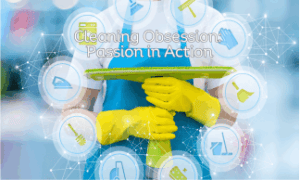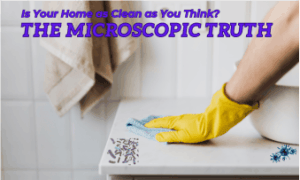Sterile vs. Clean techniques are two different approaches to maintaining cleanliness and preventing contamination in various settings, such as healthcare, laboratory work, and food preparation.
These techniques are used to ensure the safety and integrity of the environment, equipment, and materials involved. Here’s an explanation of each:

Sterile vs. Clean Techniques
Clean Technique:
- Purpose: Clean technique, also known as “clean hands” or “aseptic technique,” is used to reduce the risk of infection and minimize the introduction of microorganisms (e.g., bacteria, viruses) into a clean or semi-clean environment. It is less rigorous than sterile technique and is often used in situations where the risk of infection is relatively low.
- Examples of Use: Clean technique is commonly used in everyday activities like handwashing before eating or cooking, applying a bandage to a minor wound, and general cleaning in a non-medical or non-laboratory setting.
- Key Principles:
- Proper hand hygiene (handwashing or using hand sanitizers) to remove transient microorganisms from the skin.
- Maintaining a clean and orderly workspace.
- Using clean, disinfected, or sanitized equipment and surfaces.
- Avoiding unnecessary contact with potentially contaminated materials.
Sterile Technique:
- Purpose: Sterile technique is employed to create and maintain an environment that is completely free of microorganisms, including pathogenic ones. This is crucial in medical and laboratory settings where the introduction of contaminants can have serious consequences, such as during surgeries or microbiological research.
- Examples of Use: Sterile technique is used in operating rooms during surgical procedures, in laboratories when culturing sensitive microorganisms, and in the preparation of sterile pharmaceuticals or medical equipment.
- Key Principles:
- A strict protocol to ensure that all equipment, surfaces, and personnel involved are free of microorganisms. This includes the use of sterilization methods such as autoclaving, chemical disinfection, or radiation.
- The use of sterile gloves, gowns, and other protective gear to minimize the risk of contamination.
- Strict adherence to aseptic procedures, which may include the use of sterile drapes, sterile instruments, and a controlled environment.
- A focus on maintaining a sterile field throughout the procedure or task.
What’s the difference?
The main difference between clean vs. sterile techniques lies in the degree of microbiological control. Clean technique aims to reduce the risk of contamination in relatively low-risk settings, while sterile technique ensures the complete absence of microorganisms in high-risk situations where even a small amount of contamination can lead to severe consequences.
Both techniques are essential in their respective contexts to maintain safety and prevent infections.
Cleaning and sterilization are critical processes in various industries to maintain hygiene, safety, and product quality. Here’s a breakdown of which industries typically perform cleaning and sterilization:
Industries That Perform Cleaning:
- Healthcare Industry: Hospitals, clinics, and medical facilities require extensive cleaning to maintain a sanitary environment. This includes cleaning patient rooms, surgical areas, equipment, and instruments.
- Food and Beverage Industry: Restaurants, food processing plants, and commercial kitchens engage in cleaning to prevent food contamination. Cleaning is crucial for equipment, surfaces, and utensils.
- Pharmaceutical Industry: Pharmaceutical companies clean manufacturing equipment and facilities to prevent contamination and ensure the quality of drugs and pharmaceutical products.
- Manufacturing and Industrial Facilities: Various manufacturing industries, such as automotive, electronics, and aerospace, require cleaning for components, machinery, and workspaces to meet quality standards.
- Laboratory and Research Facilities: Laboratories clean equipment, glassware, and workspaces to maintain the integrity of experiments and research.
- Janitorial and Cleaning Services: Companies in this industry provide cleaning services for commercial and residential properties, including offices, schools, and households.
- Environmental Remediation: Environmental cleanup companies engage in cleaning contaminated sites and hazardous materials.
Industries That Perform Sterilization:
1. Healthcare Industry: Hospitals, clinics, and dental offices sterilize surgical instruments, medical devices, and equipment to prevent infections during medical procedures.
2. Pharmaceutical Industry: Sterilization is essential in pharmaceutical manufacturing to ensure the sterility of drugs and sterile products.
3. Biotechnology: Biotech companies use sterilization techniques in the production of vaccines, cell cultures, and biopharmaceuticals.
4. Food and Beverage Industry: Food processing plants use sterilization methods, such as pasteurization, to extend the shelf life of products like milk and juices.
5. Cosmetic Industry: Sterilization is crucial in cosmetics manufacturing to prevent microbial contamination of skincare and makeup products.
6. Dental Industry: Dental clinics and laboratories sterilize dental instruments and equipment to maintain aseptic conditions.
7. Research Laboratories: In microbiology and biotechnology research, sterilization is necessary to maintain sterile conditions for cultures and experiments.
8. Aerospace and Semiconductor Manufacturing: These industries require the sterilization of components and parts used in highly controlled environments.
9. Cleanroom Facilities: Industries that operate cleanrooms, such as electronics and pharmaceuticals, employ sterilization to maintain the highest levels of cleanliness and hygiene.
10. Agriculture: Sterilization techniques are used in plant tissue culture and seed production to eliminate pathogens and contaminants.
While cleaning and sterilization are important in many industries, the specific methods and requirements vary depending on the industry’s standards and the products or services they provide.
EarthSential’s Clean Approach: Striking the Balance Between Hygiene and Sustainability
When it comes to maintaining a pristine and healthy living environment, the choice between sterile and clean techniques is pivotal. While sterile techniques focus on complete elimination of all microorganisms, EarthSential advocates a clean approach, emphasizing thorough cleanliness without the need for excessive antimicrobial agents.
EarthSential’s clean technique, rooted in eco-friendly and sustainable practices, not only ensures a hygienic space but also safeguards our planet by reducing the environmental impact of harsh chemicals. In the age of heightened awareness about both health and environmental concerns, opting for EarthSential’s clean technique strikes a harmonious balance between cleanliness and eco-conscious living.
⭐⭐⭐⭐⭐
I’m very happy with my purchase of Plantsol. I never knew I could clean my house with safe ingredients and it doesn’t cost me an arm and a leg. I wasn’t sure how it was going to work on the mirror in the bathroom but I tried it anyways, and it works better than name brand glass cleaner.


Plantsol Essential Oil Cleaner Concentrate w/spray bottle
$27.99
100% natural with family safe ingredients. Amazing for the kitchen, bathroom, countertops, floors and pet items.
All Natural & Plant-based Ingredients
Cleans, degreases, deodorizes, removes stains & aromatherapy benefits
Makes 8 Quarts = Less than $3.49 each quart
Size: 32oz Scent: Mixed Essential Oil
Related Articles:
![]()
Cleaning Obsession:

Passion in Action
by Bonnie Pellerin Ι Sep 2, 2023 Ι 5 Min Read
Cleaning Your Airbnb

for Success
by Bonnie Pellerin Ι Sep 2, 2023 Ι 5 Min Read
10 Cleaning Hacks

for Pro-Level Results
by Bonnie Pellerin Ι Aug 31, 2023 Ι 5 Min Read
Is Your Home as Clean as You Think?

The Microscopic Truth
by Bonnie Pellerin Ι Sept 1, 2023 Ι 5 Min Read
Related Articles:
The Resilient Tale of Percy Jackson

Triumph Over Fleas and Ticks with a Gentle Solution
by Minus Bite Ι May 31, 2023
Get the EarthSential Newsletter
Good deals, great advice & essentially necessary.

